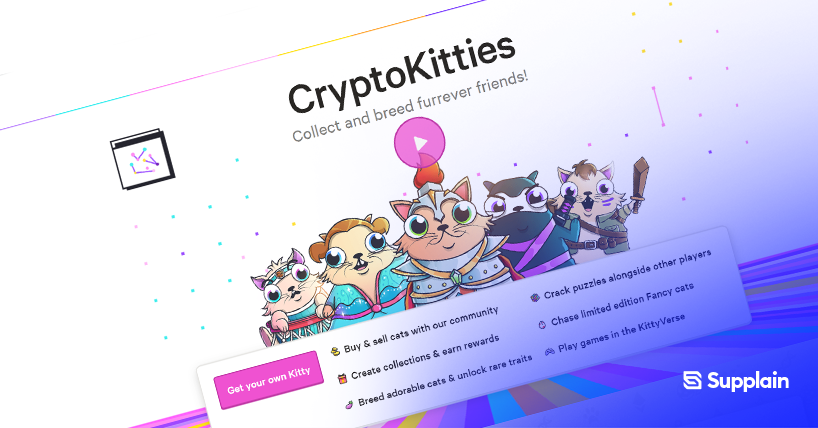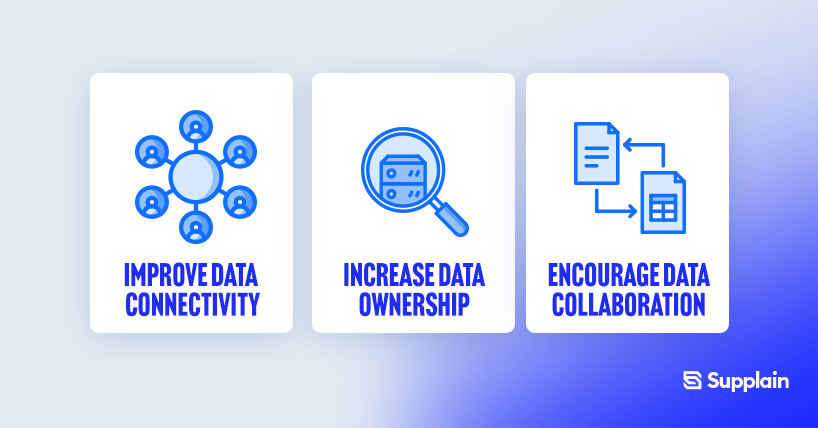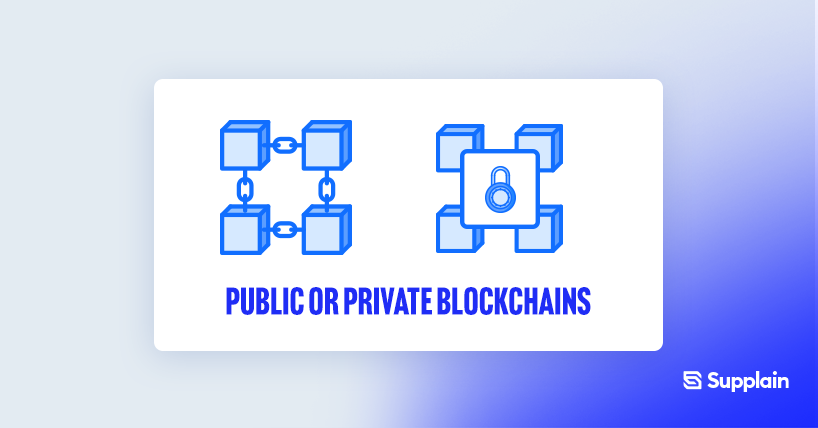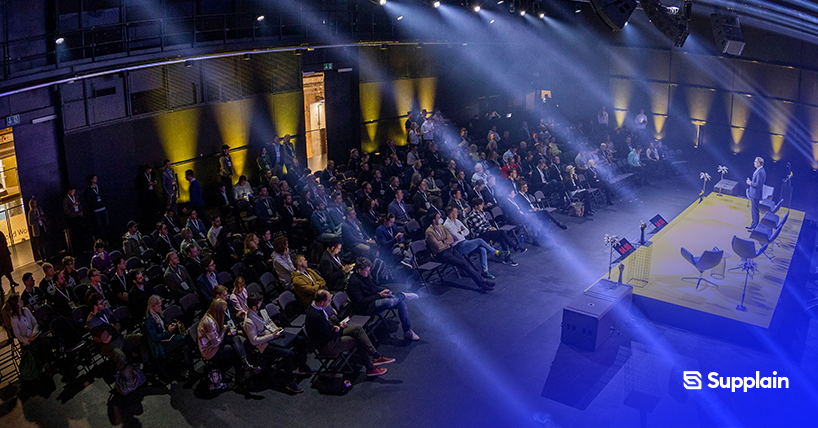
In this article from the Supplain blog, we chat with Web3 entrepreneur and Supplain CEO Sander Gansen to lay out what blockchain is, what it's suitable for, and whether he can separate the blockchain hype from reality.
First thoughts about blockchain
I first heard about blockchain and crypto in 2010, mainly surrounding Bitcoin and was convinced it was a scam.
Then, in 2015, I was at Draper University, where Tim Draper, the legendary VC behind Skype and Tesla, was starting to promote Bitcoin - and I still wasn't convinced.
I was curious, and I tested out my first wallets, using a platform called Earn.com to answer questions and earn Bitcoin and eventually bought my first CryptoKitties - NFTs of cats that you could mate.

Still, I did not pay enough attention to it until 2019.
In 2019, my daughter was born, and some friends gifted her some crypto. So I had to open an Ethereum wallet - I chose the Coinbase Wallet, and I'm still happy with it.
From that moment, I figured I'll go much more profound and make myself fully understand the capabilities of this technology. Today, I believe in it so much that I am building a supply chain protocol with my co-founders to connect supply chain companies through one open infrastructure. On the side, we've created a supply chain management game that is fully operational on the blockchain.
The question is - why?
Separating blockchain hype from reality
Let's start by separating what the hype is and what the reality is.
The thesis is that blockchain is a notary system. It's nothing more than a network of connected computers with a ledger that keeps track of transactions that have been concluded using it.
People still want to believe it's a pure and overarching ecosystem.
Sadly, several ways in which people believe about blockchains that are pure hype and speculation are:
- You can consign assets to a third party without trusting them.
- Your stock price will soar if you announce you are using blockchain.
- Big data will magically work with anything you put on the blockchain.
- You can never get hacked.
- Documents you put on the blockchain can never be made public.
The reality is not as exciting, yet still captivating enough as blockchains can be used for:
- Confirm that the bill of lading you sent is the same one received.
- Create audit trails for all your records; avoid tampering/errors across systems.
- Prove document authenticity to government auditors and customers.
- Confirm that an asset is unpledged.
- Blindly audit documents from your vendor's vendors!
Simplistically put, what those in Web3 and using blockchain are attempting to do is:
- improve data connectivity,
- increase data ownership and
- encourage data collaboration

Blockchain is a revolution of IT systems that transform the way we will all do business. For instance, business operations are usually complex, with hundreds of connections overlapping each other.
Blockchain enables us to streamline them into one protocol.
Using blockchains will enable us to create a distributed ledger shared between all stakeholders allowing them to work in a trusted and tamper-resistant environment simultaneously.
Beyond notarisation, we can use tokens to digitalise business assets. For instance, businesses can take real and virtual assets, both financial and non-financial ones, that exist in many different locations and represent them as tokens on a blockchain.
For example, Supplain is creating a protocol that would allow suppliers, manufacturers, distributors, logistics companies and other service providers to communicate with each other via one integration into an ecosystem. Thus permitting them to store essential data of products being shipped to co-owned tokens, validate this data's integrity and share it in a simple yet controlled way.
Several other exciting blockchain use cases include:
Factom develops products that aid the healthcare industry in securing and storing digital records that are only accessible by hospitals and healthcare administrators or by authorised people.
OpenBazaar is an eCommerce marketplace connecting buyers & sellers utilising blockchain technology and protecting them with various features, including reviews, an independent moderator and a multi-signature escrow payment system.
Meridio empowers commercial property owners to sell digital shares of their property. Meridio connects retail and corporate investors with property owners looking to liquidate portions of their ownership.
Digimarc is a music fingerprinting technology that stores the metadata and music sources, measures usage, and estimates payments on a blockchain.
Helium uses blockchain to connect low-power IoT machines (like routers and microchips) to the internet via blockchain-based wireless internet infrastructure.
VINchain provides blockchain solutions that integrate with usage-based insurance plans. Their products allow insurance companies to access vehicle information and driver history using a unique number.
Why have public blockchains over private blockchains?

This is a crucial question.
First, let me explain the three primary blockchain categories:
- Public, like Ethereum
- Private, like Multichain
- Consortium, like Hyperledger
Public blockchains
Public blockchains chains have generally been where:
- anyone can participate
- low throughput
- high energy consumption
- requires crypto
- high decentralisation
Private blockchains and consortium ones
Whereas private and consortium ones are usually such where:
- participants are pre-selected
- high throughput
- low energy consumption
- no crypto is required
- low decentralisation
At first glance, it would seem that the latter chains (private and consortium) would be better.
However, there's a massive difference if the ecosystem is closed. It doesn't contain the same connectivity and collaboration opportunities.
Moreover, most of these closed ecosystems are less scalable, primarily due to the actual cost to run them, the lack of trust in the leading operators and the system bandwidth is limited.
Using our own example of Supplain, companies have attempted to build similar items that we are doing, using private or consortium-based blockchains.
Although you get the same notary system as public chains, why bother using anything where the usage price might fluctuate and there's lots of hype?
However, most of these have not gotten significant adoption because using them requires readjusting existing processes to speak this closed ecosystem's language.
For instance, stakeholders can't easily share the data stored with outside parties. Companies are at the whims of the operators regarding pricing and other usages. Competitors never trust anything that isn't equally owned between parties or totally decentralised.
Naturally, there are use cases where private chains make sense. For example, the Estonian government is run on a private system because they don't need outside parties to access it, and there are no other reasons to run it on a public network.
However, in most cases, public chains have more to offer. And as new blockchains are working on the throughput and energy consumption problems, it's only looking better for the open systems now. For example, Ethereum has now gone through the Merge, changing its consensus system and lowering the energy consumption by approximately 99 per cent.
All said it's all still early days, and the technology will require a lot more development before we expect global adoption.

![Here are the best NFT games [Updated List]](https://strapi.supplain.io/uploads/What_is_so_special_about_a_World_of_Freight_NFT_and_what_will_move_the_project_forward_b89946b520.png)
